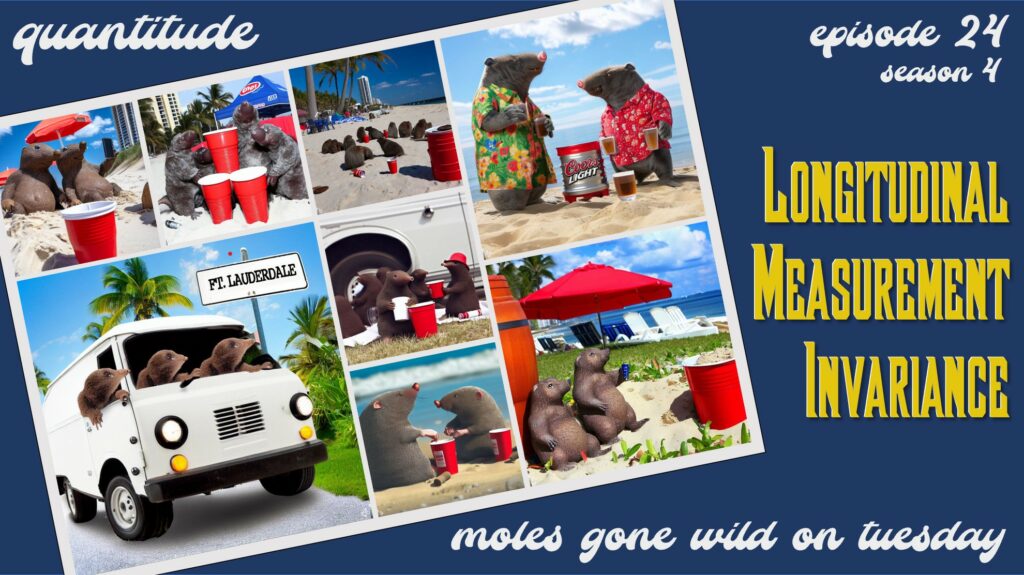In this week’s episode Patrick and Greg talk about the critical and often unmet assumptions underlying the use of measured variables at multiple time points, whether for simple analyses like tests of means or more complex analyses like modeling individual growth. Along the way they also mention: following your blocker, Pascal’s wager, Wikipedia empathy, ham sandwich syllogisms, flying cattle cars, Kennedy babies, Costco bathroom scales, Spirit Airlines, expecting you to bring wine, crying about broccoli, the Audi A series, dead raccoon smell, Joe Walsh, Greg’s abs, copy/paste measurement models, Orlando vs. Fort Lauderdale, moles on spring break, and disturbing artwork.
Related Episodes
S1E12: Measurement (Non)Invariance — Can We Ever Fail to Not Incorrectly Reject It?
S2E26: MLM vs. SEM: Opportunities for Growth
S2E07: Moderation — Well, It Depends
S4E05 Moderated Nonlinear Factor Analysis: A Conversation with Dan Bauer
Suggested Readings
Bereiter, C. (1963). Some persisting dilemmas in the measurement of change. In C. Harris (Ed.), Problems in the measurement of change (pp. 3–20). Madison: University of Wisconsin Press.
Chan, D. (1998). The conceptualization and analysis of change overtime: An integrative approach incorporating longitudinal mean and covariance structures analysis (LMACS) and multiple indicator
latent growth modeling (MLGM). Organizational Research Methods, 1, 421–483.
Chen, F. F., Sousa, K. H., & West, S. G. (2005). Testing measurement invariance of second-order factor models. Structural Equation Modeling, 12, 471–492
Ferrer, E., Balluerka, N., & Widaman, K. F. (2008). Factorial invariance and the specification of second-order latent growth models. Methodology, 4, 22–36.
Golembiewski, R. T., Billingsley, K., & Yeager, S. (1976). Measuring change and persistence in human affairs: Types of change generated by OD designs. The Journal of Applied Behavioral Science, 12(2), 133-157.
Hancock, G. R., Kuo, W.-L., & Lawrence, F. R. (2001). An illustration of second-order latent growth models. Structural Equation Modeling, 8, 470–489.
Millsap, R. (2010). Testing measurement invariance using item response theory in longitudinal data: An introduction. Child Development Perspectives, 4, 5–9.
Meredith, W. M. (1993). Measurement invariance, factor analysis and factorial invariance. Psychometrika, 58, 525–543.
Widaman, K. F., Ferrer, E., & Conger, R. D. (2010). Factorial invariance within longitudinal structural equation models: Measuring the same construct across time. Child development perspectives, 4(1), 10-18

